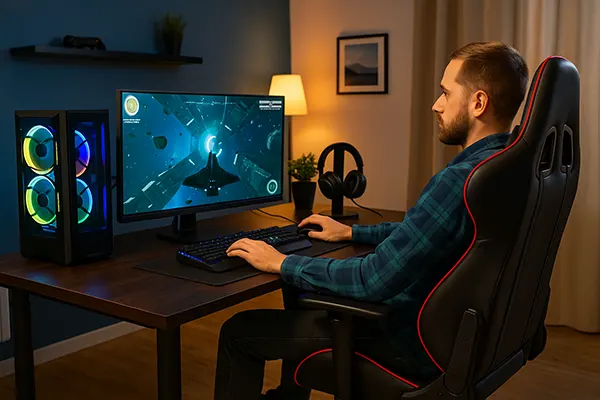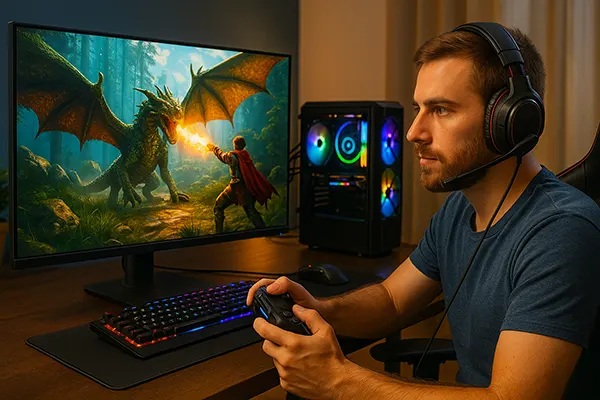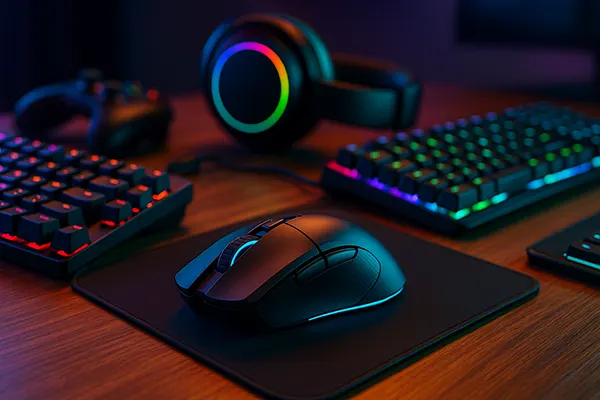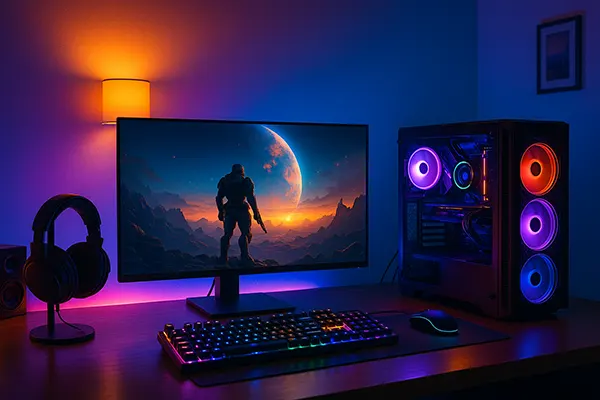
How to Choose an Ergonomic Gaming Chair: Impact on Performance and Health
Gaming is no longer a fleeting hobby; it’s a long-term commitment that requires hours of focus, skill and endurance. As the gaming industry grows, so do the physical challenges faced by players. One of the most overlooked yet critical components of a gamer’s setup is the chair. A well-designed ergonomic chair isn’t just about comfort—it plays a direct role in maintaining physical health and enhancing in-game performance over time.
Types of Gaming Chairs: Classic, Premium and Hybrid
Gaming chairs are available in several categories, each catering to specific user needs and budgets. Classic chairs often mirror the design of office chairs but incorporate stylistic gaming elements such as bucket seats and bold colours. These are commonly made of PU leather, have fixed armrests and offer basic tilt or height adjustment.
Premium gaming chairs go a step further by offering superior materials like real leather or breathable fabric, extensive ergonomic adjustability, memory foam padding, and steel frame construction. Brands like Secretlab and Noblechairs dominate this segment, often backed by warranties and endorsements from professional players.
Hybrid chairs are a recent innovation, merging features of ergonomic office chairs with the aesthetic and support of gaming chairs. They usually include advanced lumbar support systems, dynamic backrest mechanisms and minimalist visual styles—ideal for both gamers and remote professionals.
Comparing Top Brands: Secretlab, Noblechairs and AndaSeat
Secretlab chairs are known for their quality upholstery options, like SoftWeave Plus fabric and NEO™ Hybrid Leatherette. They feature multi-tilt mechanisms, full-metal 4D armrests, and patent-pending lumbar support systems. Their Titan Evo series is particularly favoured in eSports communities.
Noblechairs focuses on refined aesthetics and durability. Their Hero series includes extra-wide seats and adjustable lumbar support integrated into the backrest—perfect for larger users or those needing firmer back support. Upholstery includes real leather options, which is rare in the market.
AndaSeat, initially a manufacturer for car racing seats, entered the gaming market with robust builds and comfort in mind. Their chairs often feature thicker foam padding and wide seat bases, making them ideal for long sessions. Models like the Kaiser 3 are popular for combining affordability with pro-level features.
Key Features to Consider When Choosing
The backrest is a cornerstone of ergonomic comfort. Look for high backrests that contour to your spine and include built-in or adjustable lumbar support. Some advanced chairs even feature memory foam inserts or mechanical lumbar adjustments.
Armrests are another essential. 4D adjustable armrests (up/down, left/right, forward/backward, rotate) allow fine-tuned support for wrists and elbows, reducing strain during extended sessions. Fixed armrests limit customisation and can lead to posture issues over time.
Material matters too. Breathable mesh keeps temperatures regulated during long hours, while PU leather is durable but less breathable. Fabric upholstery offers comfort and breathability but can stain easily. A steel frame and high-density foam ensure longevity and consistent support.
Adjustability and Build Quality as Long-Term Investment
Height adjustment and tilt locking are basic yet vital features for maintaining a neutral posture. Chairs that recline up to 165–180° can double as rest spots between sessions. Some models allow seat base sliding and forward tilt, further enhancing adaptability.
Build quality affects both comfort and lifespan. Look for Class 4 gas lifts, aluminium bases and smooth-rolling casters. These components collectively support a better seating experience and justify the higher cost of quality brands.
Finally, check the warranty and customer service reputation. A good chair should last 5–10 years with daily use, and a comprehensive warranty gives peace of mind, especially for premium purchases.

Health Benefits: Posture, Spine Support and Pain Prevention
Incorrect posture over prolonged periods can lead to musculoskeletal disorders. Ergonomic chairs promote proper alignment of the neck, shoulders and spine, preventing chronic fatigue and strain-related injuries. Adjustable lumbar cushions help maintain the natural curve of the lower back.
Chairs with adequate neck and head support reduce the likelihood of developing cervical issues. Headrests should align with the top of your spine and provide gentle support to prevent hunching. This is crucial for marathon gaming or streaming sessions.
Additionally, improved posture enhances blood circulation and oxygen flow to the brain, indirectly contributing to better concentration and reaction time. Over time, gamers who invest in ergonomic chairs report fewer breaks due to discomfort and increased in-game focus.
Ergonomics and eSports: A Competitive Advantage
In professional gaming, where milliseconds matter, physical wellbeing becomes part of performance optimisation. Players using ergonomic chairs are less likely to suffer from wrist, back or neck issues that could force downtime or early retirement.
Teams and tournament organisers now provide high-end ergonomic seating as standard, recognising its role in ensuring consistent player performance. A chair becomes not just a seat, but part of the athlete’s gear.
Ultimately, the right ergonomic chair is both a health tool and a performance asset. For streamers, casual gamers, and professionals alike, it bridges the gap between comfort and competitive readiness.




